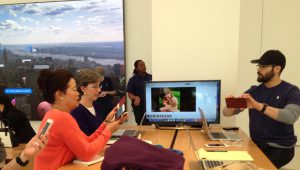Don’t define digital access problem as a divide. It’s more complex than that
June 25, 2020

Dr Natalie Pang (NUS Department of Communications and New Media) and Dr Han Ei Chew (NUS Lee Kuan Yew School of Public Policy) explain the need to look beyond the digital divide, an outdated concept hailing from the late 1990s, in ‘Don’t define digital access problem as a divide. It’s more complex than that’ in TODAYonline.
During the ongoing Covid-19 crisis that has forced millions of Singaporeans to work and socialise remotely and digitally, the issue of access has sharply come into public focus. However, rather than defining the gaps in digital access as a binary problem, the authors argue that there are extra layers of complexities involved; they see digital access as a moving target and find there are often several divides between those who have digital access and those who don’t.
Dr Pang and Dr Han go on to define the real problem as one of digital equity, which reframes the issue beyond the simple lack of digital services to one of meaningful inclusion. In other words, the mere provision of technology will not bring about a positive or lasting impact unless the individual knows how and why they are using it.
In their research, they found that retaining human elements such as younger family members explaining to grandparents the reasons for QR code check-ins at supermarkets or parents explaining to children how to use the internet safely sped up technology literacy significantly.
The article states that the key to digital equity in Singapore goes beyond simply providing laptops or fibre optic internet. Digital equity entails being more inclusive of under-represented groups, such as women and those with disabilities. Finally, above all else it must be explained to the end user, in human and relatable terms, why the technology is useful.
Read the full article here
